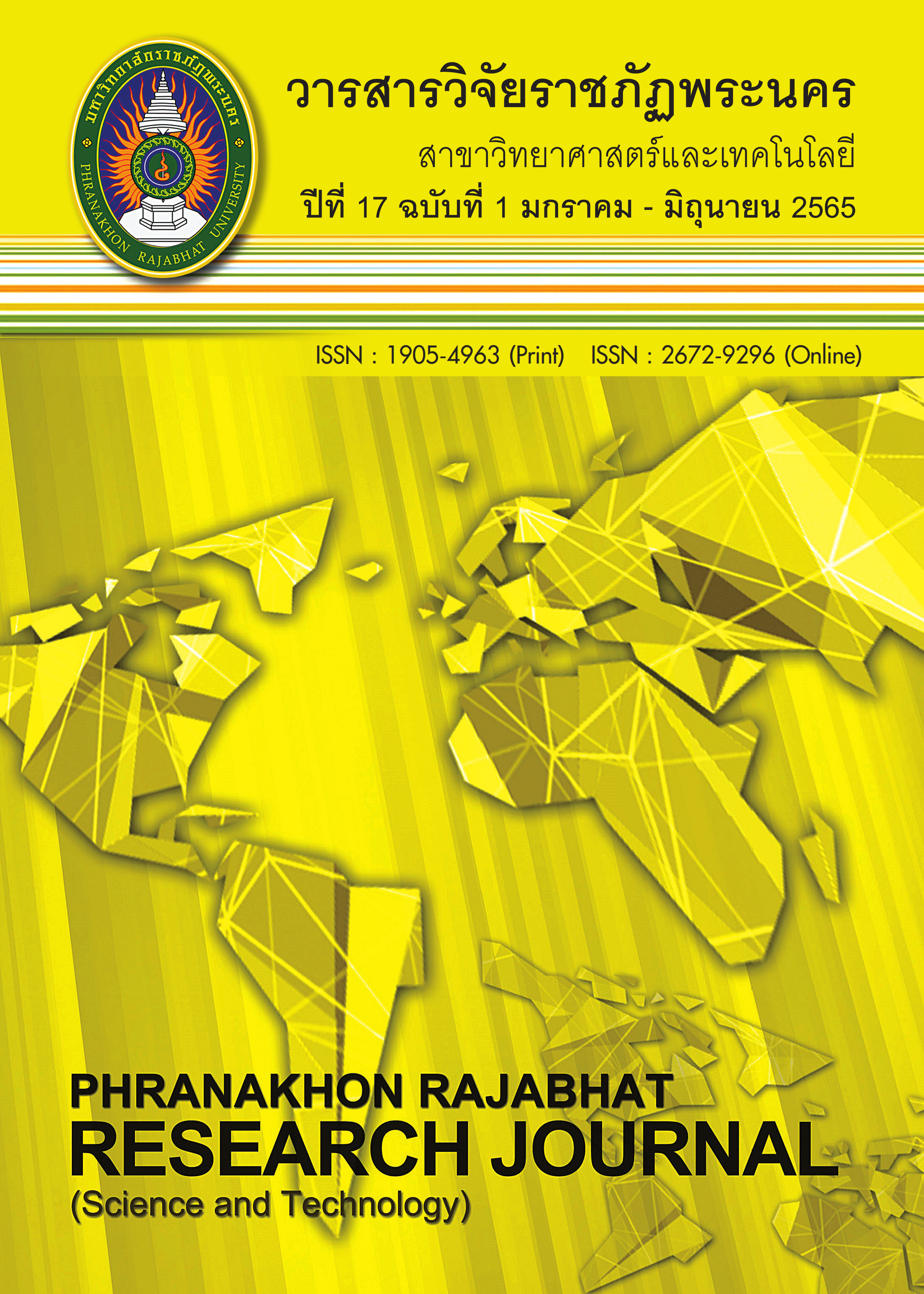TYPE AND QUANTITY OF BACTERIA IN AIR FROM THE MAIN SERVICE ACTIVITIES IN THE OFFICE, CASE STUDY: FACULTY OF SCIENCE’S OFFICE UDON THANI RAJAHAT UNIVERSITY, SAM PHRAO CAMPUS
Keywords:
Type of bacteria, Quantity of bacteria, OfficeAbstract
This study aimed to identify type and quantity of bacteria in the air collected from the administrative office of the Faculty of Science UdonThani Rajabhat University, Sam Phrao Campus. The study was conducted during May 2019 - April 2020 to cover all seasons in a year. The samples were collected -using Andersen N-6 stage sampler set at 75-120 cm. height from the ground (breathing zone) at flow rate of 28.3 l/minute for 10 minute. The results showed that. the highest average amount of total bacteria was found in the summer (234.39 CFU/m3) which comprised of 3 types of bacteria, namely Bacillus spp. 63.6% -Pseudomonas spp. 18%, and Staphylococcus spp. 18.4% respectively. The average amount of totel bacteria in rainy season was 233.21 CFU/m³ which comprised of -Pseudomonas spp. 23.7%, Staphylococcus spp. 76.3%. The lowest amount of total bacteria was found in the winter (186.09 CFU/m³) which comprised of 3 Bacillus spp. 60% Pseudomonas spp. 22.4%, and Staphylococcus spp. 17.6%. Our results revealed that the amount of bacterial found in all seasons did not exceeded the WHO standard of, 500 CFU/m³. The data analysis using F-Test by One-way ANOVA suggested that the amount of bacteria found among the 3 seasons, were not statistically significant difference (p>0.05)
References
Deejamala, P., & Nathapidhu, G. (2015). Type and quantity of bacteria in the air environment of junk shops in Khon Kaen Municipality, Khon Kaen Province. Journal of Office of DPC 7 Khon Kaen, 22(1), 68-77. (In Thai)
Environment Agency. (2004). Monitoring of particulate matter in ambient air around waste facilities. Technical Guidance Document (Monitoring) M17. R&D Project:1-323.
Jim, D. (2000). The microbial world: airborne microorganism. Retrieved from http://www.biology.ed.ac.uk/archive/jdeacon/microbes/airborne.htm [2013, 12 Sep.].
Kimnarak, P. (2015). Distibution of fungi in medical technology laboratory: case study of medical technology laboratory, Nakhon Pathom hospital, Nakhon Pathom Province. (Master of Environmental Science), Silpakorn University, Nakhon Pathom. (In Thai)
Romyen, D. (2013). Correlation of environmental factors and other factors related to sick building syndrome among nursing staffs of a university hospital. (Master of Science in Environment Management), Prince of Songkla University, Songkla. (In Thai)
Sakulku, P. (2018). The amount and type of bacteria in the air from the main service activities in dental clinics. community hospital case study. Office of Disease Control No. 7 Khon Kaen, 25(1), 12-22. (In Thai)
Srithewin, S., & Nathapindhu, G. (2012). Ambient Microbial Contamination in Different Hospital Scales. KKU Research Journal (Graduate Studies), 12(1), 92-101. (In Thai)
Techa-Amnuaywit, S. (.2008). Fixing fungal problems in air conditioning systems. Retrieved from http://www.acat.or.th/download/acat_or_th/journal-16/16%20% 2008.PD [2015, 20 Aug.]
Office of Environmental Health, Department of Health, (2016). Operation Manual for Internal Air Quality Assessment Building. Retrieved from http://ghh.anamai.moph.go.th/storage/app/uploads/public/603/b5b/072/603b5b0720697166916487.pdf [2019, 11 May.]
Downloads
Published
Issue
Section
License

This work is licensed under a Creative Commons Attribution-NonCommercial-NoDerivatives 4.0 International License.
โปรดกรอกเอกสารและลงนาม "หนังสือรับรองให้ตีพิมพ์บทความในวารสารวิจัยมหาวิทยาลัยราชภัฏพระนคร สาขาวิทยาศาสตร์และเทคโนโลยี" ก่อนการตีพิมพ์




